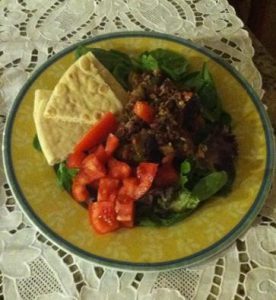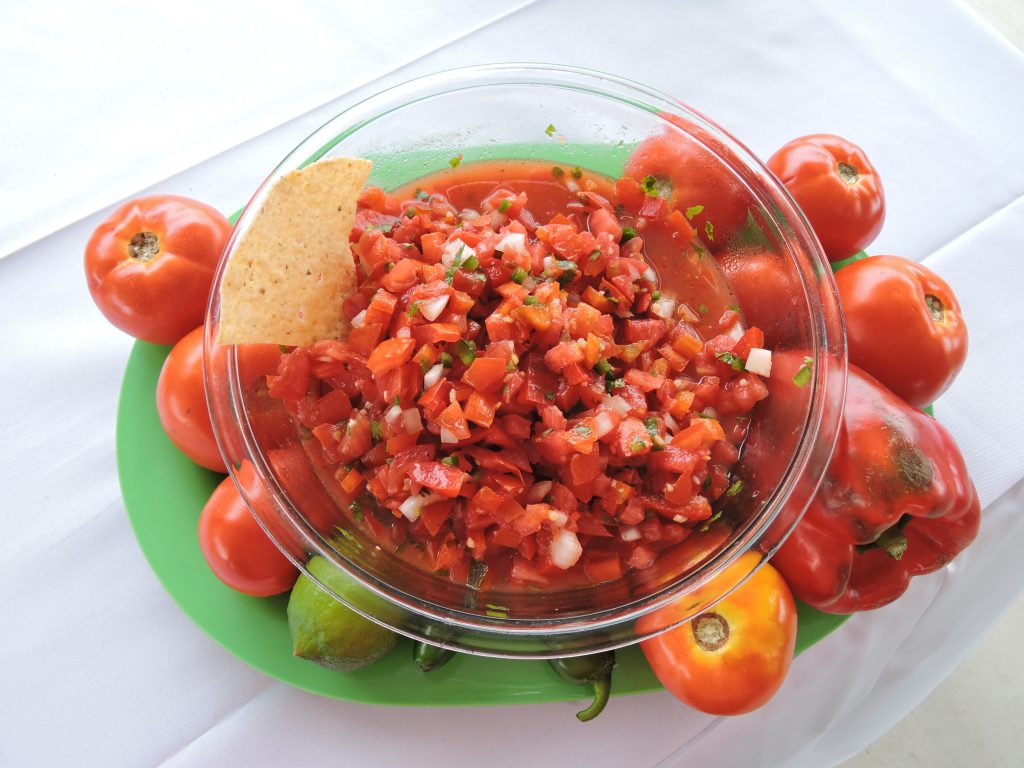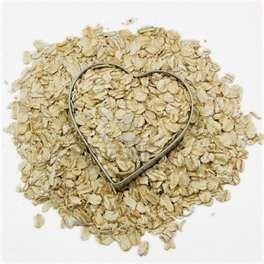
by Melanie Taylor | Oct 16, 2017

Make Halloween a fun and safe night for children and adults alike.
From candy to pumpkins to the costumes, Halloween is a fun-filled time for kids and adults alike. However, it can pose dangers. To help make this year’s trick-or-treat a safe and fun time, follow these simple safety tips compiled by the American Academy of Pediatrics.
CREATIVE COSTUMES:
Plan costumes that are bright and reflective. Make sure shoes fit well and costumes are short enough to prevent tripping, entanglement, or contact with flames.
Consider adding reflective tape or striping to costumes and trick-or-treat bags for greater visibility.
Because masks can limit or block eyesight, consider non-toxic makeup and decorative hats as safer alternatives. Hats should fit properly to prevent them from sliding over eyes. The makeup should be tested on a small patch of skin ahead of time to ensure there are no unpleasant allergies on the big night.
When shopping for costumes, wigs, and accessories, look for and purchase those with a label clearly indicating they are “flame resistant.”
If a sword, cane, or stick is a part of your child’s costume, make sure it is not sharp or long. A child may be easily hurt by the accessories if he/she stumbles or trips.
Do not use decorative contact lenses without an eye examination and a prescription from an eye care professional. While the packaging on decorative lenses will often make claims such as “one size fits all,” or “no need to see an eye specialist,” obtaining decorative contact lenses without a prescription is both dangerous and illegal. This can cause pain, inflammation, and serious eye disorders and infections, which may lead to permanent vision loss.
Review with children how to call 911 if they ever have an emergency or become lost.
PUMPKIN CARVING TIME:
Small children should never carve pumpkins. Children can draw a face with markers. Then adults can do the cutting.
Consider using a flashlight or glow stick instead of a candle to light your pumpkin. If you do use a candle, a votive candle is safest.
Candlelit pumpkins should be placed on a sturdy table, away from curtains and other flammable objects, and not on a porch or any path where visitors may pass close by. They should never be left unattended.
HOME SAFETY:
To keep homes safe for visiting trick-or-treaters, parents should remove from the porch and front yard anything a child could trip over such as garden hoses, toys, bikes, and lawn decorations.
Adults should check outdoor lights and replace burned-out bulbs.
Wet leaves and debris should be swept from sidewalks and steps.
Restrain pets so they do not jump on or bite a trick-or-treater.
TRICK-OR-TREAT TIME:
A responsible adult should always accompany young children during their neighborhood trick-or-treating.
Obtain flashlights with fresh batteries for all children and adults.
If your older children are going alone, plan and review the route that is acceptable to you. Agree on a specific time when they should return home.
Only go to homes with a porch light on and never enter a home or car for a treat.
Because pedestrian injuries are the most common injuries to children on Halloween, remind Trick-or-Treaters to:
- Stay in a group and communicate where they will be going.
- Remember reflective tape for costumes and trick-or-treat bags.
- Carry a cellphone for quick communication.
- Remain on well-lit streets and always use the sidewalk.
- If no sidewalk is available, walk at the far edge of the roadway facing traffic.
- Never cut across yards or use alleys.
- Only cross the street as a group in established crosswalks (as recognized by local custom). Never cross between parked cars or out of driveways.
- Do not assume the right of way. Motorists may have a hard time seeing Trick-or-Treaters.
- Just because one car stops does not mean others will!
- Law enforcement authorities should be notified immediately of any suspicious or unlawful activity.
HEALTHY HALLOWEEN TIPS:
A good, healthy dinner prior to parties and trick-or-treating will discourage children from filling up on Halloween treats.
Consider purchasing non-food treats for those who visit your home, such as coloring books, stickers, or pens and pencils.
Wait until children are home to sort and check treats. Though tampering is rare, a responsible adult should closely examine all treats and throw away any spoiled, unwrapped or suspicious items.
Try to ration treats for the days and weeks following Halloween to prevent overindulging, which will lead to a stomachache and ruin the night’s fun.
Make sure the Halloween night is fun and safe with the suggested tips above. These tips will help guarantee you all a ghoulishly good time.
Source: American Academy of Pediatrics
by Heidi Copeland | Aug 7, 2017
 Can you believe it is that time of year already to sneak some zucchini on your neighbor’s porch! Honestly, it is a day to celebrate. And celebrate we should! It is the lucky neighbor who profits from the gardeners abundant harvest. Nonetheless, what can one do with all that zucchini?
Can you believe it is that time of year already to sneak some zucchini on your neighbor’s porch! Honestly, it is a day to celebrate. And celebrate we should! It is the lucky neighbor who profits from the gardeners abundant harvest. Nonetheless, what can one do with all that zucchini?
The late, Julia Child bestows the virtue of ratatouille in many of her books yet it seemed to take an animated rat in the award winning Pixar film to suggest ratatouille might be something to try. Really! Ratatouille, a traditional French Provençal stewed vegetable dish, originating in Nice is a mostly Mediterranean fare, however, we too have all the local produce to adapt this delicious dish.
How? What do you need? Ratatouille can be made just the way you like it but start with the basics: onions, eggplant, zucchini, garlic, tomatoes, red, green or yellow peppers, mushrooms, and fresh or dried herbs and a pinch of salt and pepper.
Ratatouille is typically served as a side dish, but may also be served as a vegetable soup, or a meal on its own accompanied by pasta, rice or bread. Ratatouille is good as a topping for your favorite grilled meat or fish, or as a filling in a simple omelet. Did I mention it can be added to quiche? Or stuffed into a pita pocket?
There is as much deliberation on how to make a traditional ratatouille as there is about how you eat it. Do you layer it and bake it? Is it sautéed? Is it simmered? Is it eaten as a side dish, a main dish or a sandwich filling? I’ve tried them all and even found success using a slow-cooker.
Try your hand at this simple yet elegantly adaptable vegetable dish.
The provided very basic recipe can be adapted to suit your personal/regional taste. Don’t like eggplant? Leave it out! Have a lot of okra or yellow squash? Add it! Like olives, nuts or raisins? Add them to your portion. Rather not use vegetable oil? Don’t! Want to cover it in your favorite spicy olive oil? Do you have some extra zucchini? I think you get the picture.
Ratatouille does not have to look like the vibrant Pixar version yet, it is still going to garner up gracious comments and acknowledgements from those you love and cook for. Whip up your version to savor today!
Ratatouille
Ingredients:
2 Tablespoons any kind of oil
4 medium onions, chopped – any color, any kind
2 medium eggplant, cut into 3/4-inch cubes
4 garlic cloves, minced
6 medium zucchini, cut into 1-inch cubes
2 large green, red or yellow bell pepper seeded and cut in 1” cubes
8 to 10 ripe tomatoes, peeled, seeded coarsely chopped (or use a can of fire roasted diced tomatoes)
3 fresh thyme sprigs (or to taste)
1 fresh rosemary sprig (or to taste)
1 dried or two fresh bay leaves
1/2 tsp. salt
1/2 tsp. freshly ground pepper
Directions:
In a BIG pot over medium heat, warm the oil. When it is hot, reduce the heat to medium, add the onions and sauté until translucent, about 2 minutes. Add the eggplant and garlic and sauté, stirring often, until the eggplant cubes are slightly softened, 3 to 4 minutes.
Add the zucchini and bell pepper and sauté, stirring and turning, until softened, 4 to 5 minutes more. Add the tomatoes, thyme, rosemary, bay leaf, salt and pepper, and stir and turn for 2 to 3 minutes more.
Cover, reduce the heat to low and cook, stirring occasionally, until the vegetables are soft and have somewhat blended together, about 60 minutes. (slow cooker at least 4 hours on high)
Remove from heat. Garnish with minced fresh basil. Transfer to a serving bowl and serve hot, at room temperature or cold. Serves at least 10.
by Pam Allen | Aug 5, 2017
 Tomatoes are abundant this time of year and you have many options to buy local and fresh. Tomatoes are one of the most popular home garden vegetable to grow and should now be providing the home gardener with fresh ripe bounty from now until summers end. Our local farmer’s markets are also selling tomatoes home grown and in many colors like deep red, bright yellow and green. Our climate is great for growing tomatoes. In fact, Florida is the nation’s largest producer of fresh tomatoes.
Tomatoes are abundant this time of year and you have many options to buy local and fresh. Tomatoes are one of the most popular home garden vegetable to grow and should now be providing the home gardener with fresh ripe bounty from now until summers end. Our local farmer’s markets are also selling tomatoes home grown and in many colors like deep red, bright yellow and green. Our climate is great for growing tomatoes. In fact, Florida is the nation’s largest producer of fresh tomatoes.
Nutritionally, tomatoes are packed with vitamin C and A. Low in calories and high in flavor, this succulent vegetable is a favorite all year long. Tomatoes are great served sliced and also in cooked dishes. Tomatoes should be stored at room temperature away from direct sunlight. Ripe tomatoes should be used within 3 to 4 days. For best flavor, do not refrigerate. Ripe tomatoes will give slightly to gentle pressure
If you want to preserve the summer’s tomato bounty, try your hand at canning. Remember to use USDA recommended practices for safety and long term quality. For a complete listing of how to safely can tomato products you will find the USDA guide here: http://nchfp.uga.edu/publications/usda/GUIDE03_HomeCan_rev0715.pdf
Farm Fresh Salsa
Fresh salsa is a low-fat, low sodium, treat that is packed with flavor and essential nutrients. Adjust the salt and oil to your taste and diet.
Ingredients:
6 medium ripe tomatoes, chopped
4 garlic cloves, minced
1 ½ seeded and minced jalapenos
1 red bell pepper, finely dices
½ red onion, finely chopped
1 Tablespoon olive oil
1 lime, juiced
Chili Powder, salt and pepper, to taste
Fresh scallions, cilantro or parsley, to taste
Directions:
In a bowl, combine all ingredients. Place in refrigerator for up to 12 hours for flavor infusion. Serve with your own baked chips.
Baked Tortilla chips
1 package medium or large tortillas
Cooking Spray
Salt to taste
Directions
Preheat oven to 375˚ F
On a cutting board cut tortillas into 8 – 12 pieces using a pizza cutter.
Place aluminum foil on 2 or 3 baking sheets.
Place tortillas pieces in a single layer on a cookie sheet.
Lightly coat tortillas with cooking spray on both sides.
Sprinkle tortilla pieces with salt to taste – or with salt-free alternative for dietary needs.
Place in oven and cook 10-15 minutes until crisp.
by Laurie Osgood | Jan 27, 2017
It’s that time of year again – time to make resolutions designed to improve your life to become a happier, healthier, and wealthier person. Unfortunately, some resolutions are not realistic and set us up for failure from the start. A very small percentage of us manage to maintain these lofty resolutions.
However, there are small changes you can make today that can help you enjoy a healthy lifestyle. You can start by simply reading the nutrition fact labels on your favorite foods. Smart dietary choices include eliminating or cutting back on these 5 commonly used food items.

- Added Sugar: Some foods, such as milk (lactose) and fruits (fructose), naturally contain sugars. Added sugars (like sucrose and high fructose corn syrup) are added to prepared foods and drinks. Many prepared and processed foods are stocked with added or refined sugars for supplemental sweetness. Added sugars are often called “empty” calories, because they contain extra calories and few or no vitamins and minerals, and can lead to extra pounds or even obesity, thereby reducing heart health. Alternatives: Instead of eating foods with a lot of added sugar, try a piece of fruit or use other options such as raw honey, Stevia or maple syrup.
- Sodium: is found in many processed foods, and is commonly known as salt. Excess sodium increases blood pressure because it holds excess fluid in the body, and that creates an added burden on the heart. Too much sodium will increase your risk of stroke, heart failure, osteoporosis, and some cancers. Alternatives: You can reduce the amount of sodium in your diet by limiting the amount of salt you add to your foods, avoiding processed foods, and by choosing “reduced sodium,” “no sodium added,” or “low sodium” options when available. Try experimenting with fresh or dried herbs/seasonings to flavor to foods without adding salt.
- Enriched Flour: this ingredient is included in many of the processed foods that we eat including pasta, cereals and breads. Whole grain flours are often stripped of their nutrients. Then, to be considered enriched, vitamins, sugar, and other additives are added back in. Alternatives: Instead of white bread, pasta or rice, choose whole grain products instead.
- Saturated Animal Fats: this type of fact, in the form of lard, butter, eggs, cheese, and tallow come primarily from animals and are known to cause health issues such as high cholesterol and heart disease. Minimizing intake of unhealthy fats allows you to reduce calorie intake in a healthy manner. Unsaturated fats offer important health benefits and should be included in everyone’s diet. Alternatives: A simple alternative to saturated fats in your diet can be unsaturated fats found in non-animal, plant products such as fruits & vegetables, oils, nuts and seeds.
- Hydrogenated Oils; commonly called Trans fats, or Trans Fatty Acids. Hydrogenation is the process of converting a pourable oil into a more solid, saturated fat, and is often added to a product in order to extend its shelf life. Partially or fully hydrogenated oils promote cardiovascular diseases by raising your bad (LDL) cholesterol levels and lowering your good (HDL) cholesterol levels. Alternatives: Choose oils that are high in polyunsaturated and monounsaturated fat, such as olive, safflower and peanut oils. Another healthy alternative to hydrogenated oil is Omega- 3 oils from fish. Also, try broiling foods instead of frying.
Overly ambitious New Year’s Resolutions often fail because they require major changes in a very short amount of time, making them almost impossible to stick with. Instead of broad, life changing goals, your New Year’s Resolution should include small lifestyle changes, such as starting with cutting back on or eliminating these 5 items.
Resources:
University of Florida IFAS Extension;
http://edis.ifas.ufl.edu/fy1400
American Heart Association:
http://www.heart.org/HEARTORG/HealthyLiving/HealthyEating/Nutrition/Added-Sugars_UCM_305858_Article.jsp#.WG1D0k0zWLw
USDA Choose MyPlate.gov:
https://www.choosemyplate.gov/myplate-mywins
Footnotes:
Laurie B. Osgood, Family and Consumer Sciences Agent, Gadsden County Extension, UF/IFAS Extension, Quincy, FL 32351 (850) 662-3287 Osgoodlb@ufl.edu
The Institute of Food and Agricultural Sciences (IFAS) is an Equal Opportunity Institution authorized to provide research, educational information and other services only to individuals and institutions that function with non-discrimination with respect to race, creed, color, religion, age, disability, sex, sexual orientation, marital status, national origin, political opinions or affiliations. For more information on obtaining other UF/IFAS Extension publications, contact your county’s UF/IFAS Extension office.
U.S. Department of Agriculture, UF/IFAS Extension Service, University of Florida, IFAS, Florida A & M University Cooperative Extension Program, and Boards of County Commissioners Cooperating. Nick T. Place, dean for UF/IFAS Extension.
by Melanie Taylor | Jan 6, 2017
 January’s grain of the month is OATS. Americans buy more oats at this time of year than in any other month – and January has long been celebrated as National Oatmeal Month.
January’s grain of the month is OATS. Americans buy more oats at this time of year than in any other month – and January has long been celebrated as National Oatmeal Month.
Oats at a Glance
Samuel Johnson’s 1755 dictionary defined oats as “A grain, which in England is generally given to horses, but in Scotland appears to support the people.” The Scotsman’s retort to this was, “That’s why England has such good horses, and Scotland has such fine men!” Oats (Avena sativa) have a sweet flavor that makes them a favorite for breakfast cereals. Unique among the most widely-eaten grains, oats almost never have their bran and germ removed in processing. So, if you see oats or oat flour on the label, relax; you’re virtually guaranteed to be getting whole grain.
In the U.S., most oats are steamed and flattened to produce rolled oats, sold as “old-fashioned” or regular oats, quick oats, and instant oats. The more oats are flattened and steamed, the quicker they cook – and the softer they become. If you prefer a chewier, nuttier texture, consider steel-cut oats, also sometimes called Irish or Scottish oats. Steel-cut oats consist of the entire oat kernel (similar in look to a grain of rice), sliced once or twice into smaller pieces to help water penetrate and cook the grain. Cooked for about 20-30 minutes, steel-cut oats create a breakfast porridge that delights many people who didn’t realize they love oatmeal!
Health Benefits of Oats
Scores of studies have documented the many health benefits of oats:
- Eating oats helps lower LDL “bad” cholesterol and may help reduce the risk of heart disease.
- Oats help you feel fuller longer, which helps control your weight.
- Oatmeal and oats may help lower blood pressure.
- Oats may help reduce your risk of type 2 diabetes, since their soluble fiber helps control blood sugar.
- Oats help cut the use of laxatives without the side effects associated with medications.
- Oats are high in beta-glucans, a kind of starch that stimulates the immune system and inhibits tumors. This may help reduce your risk of some cancers.
- Early introduction of oats in children’s diets may help reduce their risk of asthma.
- Oats are higher in protein and healthy fats and lower in carbohydrates than most other whole grains.
- Oats contain more than 20 unique polyphenols called avenanthramides, which have strong anti-oxidant, anti-inflammatory, and anti-itching activity.
Meal Ideas
Think oats are limited to breakfast cereals, cookies, and snack bars? Think again! Oats can be used in place of bread crumbs in meatloaf and hamburgers, in side dishes, and as a crispy coating. Check out these recipes for healthy, new ways to use oats:
For additional oat recipes you may want to try at home, visit: http://wholegrainscouncil.org/
Source: Whole Grains Council at http://wholegrainscouncil.org/






